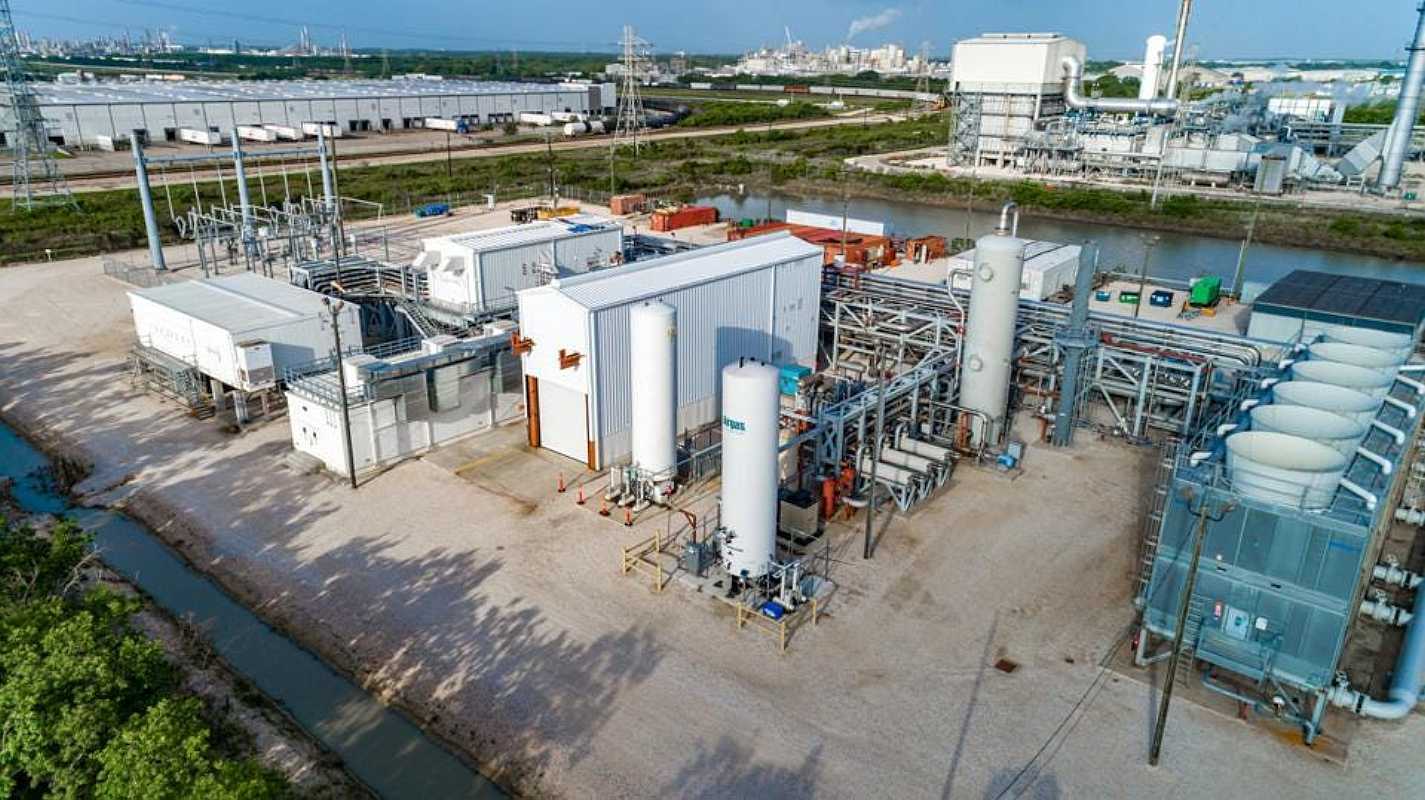The combustion of natural gas with oxygen can be useful for natural gas power plants and the production of hydrogen – shows the cleantech startup Net Power.
The EU argues about it, the CDU has it in its electoral program, business associations such as the BDEW are calling for it as an interim solution: blue hydrogen made from natural gas. The idea is: The CO released during production2 is caught and safely stored underground. But there are two major disadvantages: On the one hand, 100 percent separation of nitrogen is expensive. On the other hand, the methane released during extraction and transport is particularly harmful to the climate. To solve the nitrogen problem, the pre-combustion of natural gas in oxygen could make sense – as the cleantech startup Net Power is planning.
Blue hydrogen is considered to be low in carbon and is viewed by many institutions as an interim solution for achieving climate goals. Scientists like Prof. Claudia Kemfert, on the other hand, advise from a climate policy point of view to rely exclusively on green electrolysis hydrogen – also in order to make the technology cheaper through rapid scaling up.
Currently, 70 million tons of hydrogen are produced every year. It is made from unburned natural gas or coal (steam reforming). Means: Due to the process, nine to 12 tons of carbon dioxide are released for every ton of hydrogen. In theory, capturing the CO2 should make the technology cleaner. However, this process is very expensive, which is why even with existing systems with CCS only a 70 to 85 percent reduction in emissions can be assumed.
The high costs have to do with the fact that when natural gas is burned in air, a mixture of water, CO2 and nitrogen remains because the air consists of 78 percent nitrogen. According to experts, separating CO2 from nitrogen is very expensive.
But there may be a new idea that could reduce this problem of blue hydrogen: If natural gas is “pre-burned” with oxygen, the result is a mixture of water and CO2. The water can be condensed out so that pure CO2 remains.
But where do you get pure oxygen for this pre-combustion? It is a by-product of the electrolysis of water – possibly a coincidence to get the CCS process cleaner in regions where both technologies exist.
Cleantech startup Net Power is embarking on the Allam cycle
The combustion of oxygen to obtain carbon dioxide is also part of the so-called Allam-Fetvedt cycle, which the American cleantech startup Net Power would like to use to enable emission-free gas-fired power plants. Net Power uses carbon dioxide, which results from the combustion of natural gas with oxygen, to drive the turbines of the Net Power system.
However, CO is required for this2 necessary in “supercritical state” – the hot greenhouse gas has to be put under very high pressure for this. It becomes a kind of liquid gas, can flow through the turbine and help generate electricity. Already in 2018 reported to Bloomberg Quicktake about the technology that is now to be implemented in Texas.
After cooling, the amount of carbon dioxide that was previously added via the natural gas is separated – the greater part is fed back into the combustion chamber. With the help of a heat exchanger, a circuit is created that is named after the scientist Rodney Allam. Despite all these technical steps, the efficiency should be 59 percent – comparable to fossil gas and steam turbine power plants.
The startup has licensed its technology to developer 8 Rivers Capital LLC, who wants to work with agribusiness Archer-Daniels-Midlands Co. to replace emissions from a coal-fired power plant in Illinois. In mid-April, the partners announced the construction of the first two “zero emissions” power plants.
The basic problem of methane emissions remains
So while the separation of 100 percent of the greenhouse gas carbon dioxide appears technically possible, the problem of volatile emissions remains. It was only recently announced that Gazprom, for example, had the largest accidental methane emissions of the year.
Because methane is a much more effective greenhouse gas than CO2, there is a great danger here. And ultimately you don’t just have to look into fracking regions or keep an eye on pipelines lying in the thawing permafrost. Even in Germany there are more methane leaks in the natural gas infrastructure than admitted.
Deutsche Umwelthilfe and the US organization Clean Air Taskforce recently examined 14 German locations – and presented how you can read about energy future – terrifying results found. After all, the EU announced in 2020 that it wanted to improve the measurement and reporting of methane emissions. Of course, it is primarily a matter of eliminating leaks – and not just in Europe, but along the entire route up to this point.
Ultimately, as in the example of Net Power, oxygen can be a decisive component in making hydrogen production or electricity generation with CCS more economically attractive and environmentally friendly. As long as efforts to fix methane leaks are minimal, the BDEW, CDU and Co. should be cautious about their calls for blue hydrogen. Otherwise the climate balance will not work out in the end.


